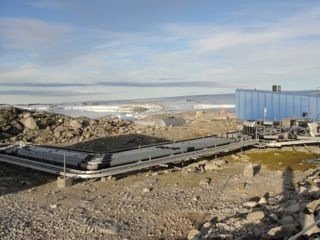Removing contaminants from soil is expensive and time consuming and it is important to understand how clean the soil has to be. One way to do this is to work out the toxicity of the fuel to various animals and plants that are found in the area so we can be sure that the clean up is good enough to maintain biodiversity. Anna's work (cosupervised by Dr Cath King and Dr Jane Wasley at the AAD) was the first to look at how well moss and algae can cope with fuel contaminated soil. We found the mosses were quite resilient, they are tough critters after all. Partly they can avoid the fuel because they don't have roots and they are only exposed to the oil if it is in their melt water. This finding may expalin why we have noticed a lot of moss plants growing around the station powerhouse.
Anna's paper is available online Nydahl, A., Wasley J., King,C.K., Jolley, D.F., Robinson, S.A. Toxicity of fuel contaminated soil to Antarctic moss and terrestrial algae. Environmental Toxicology and Chemistry DOI: 10.1002/etc.3021. Email if you want a copy.
Casey Station Main powerhouse (blue) with the site services cable trays which transport power, water and sewage around the station. To the left of the image there is a patch of moss and algae growing on soil that has been contaminated with fuel in the past.


